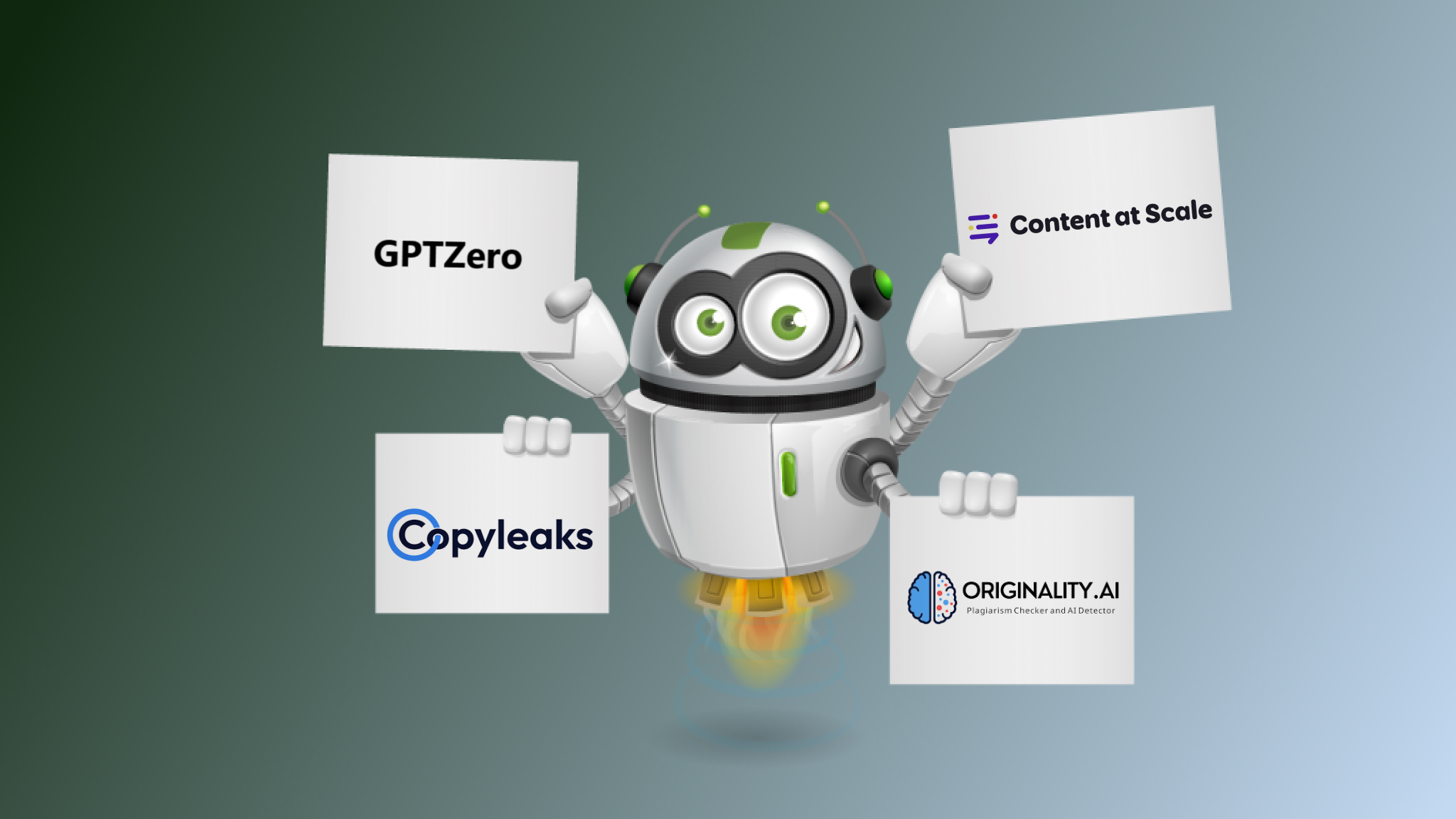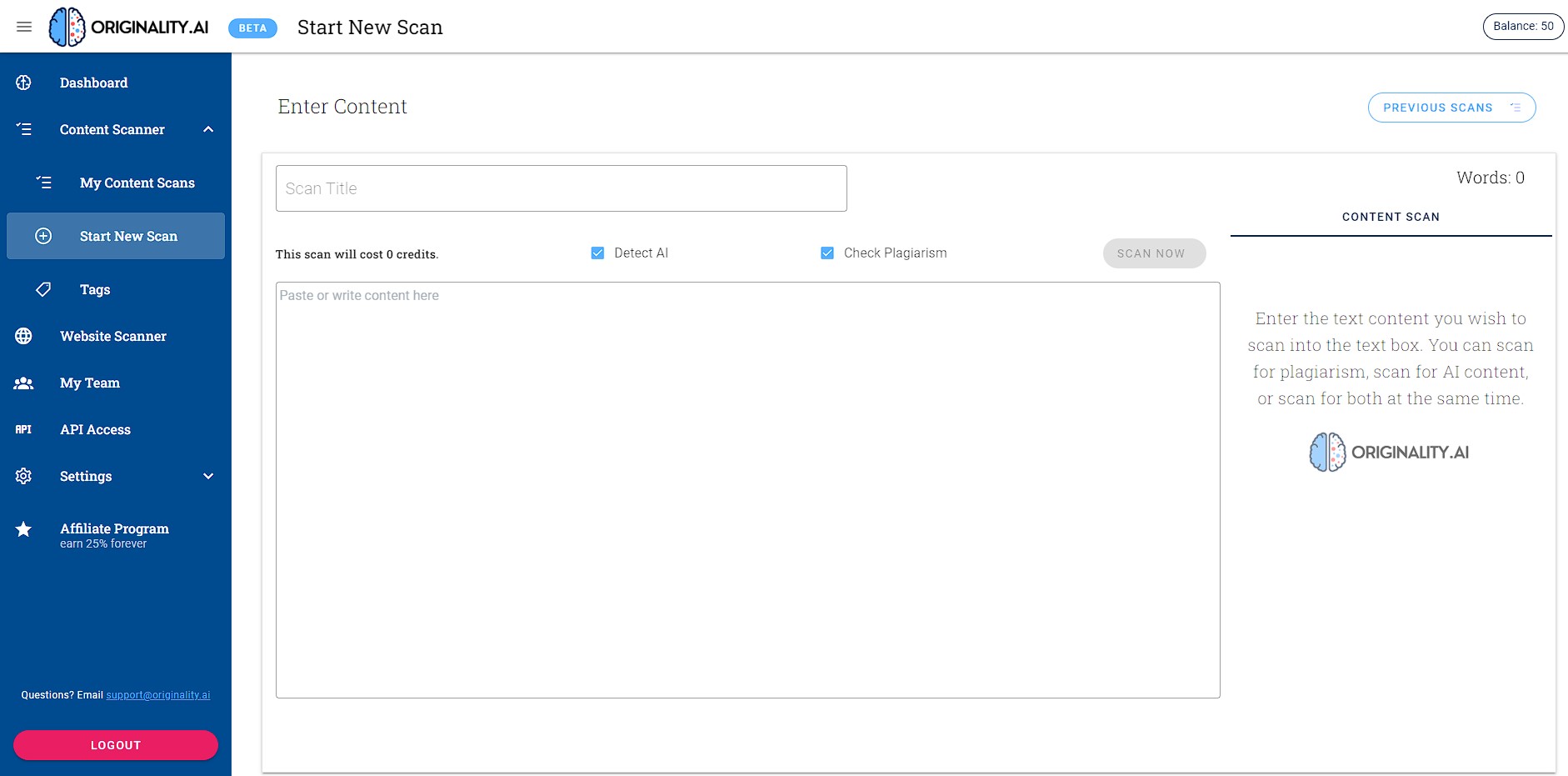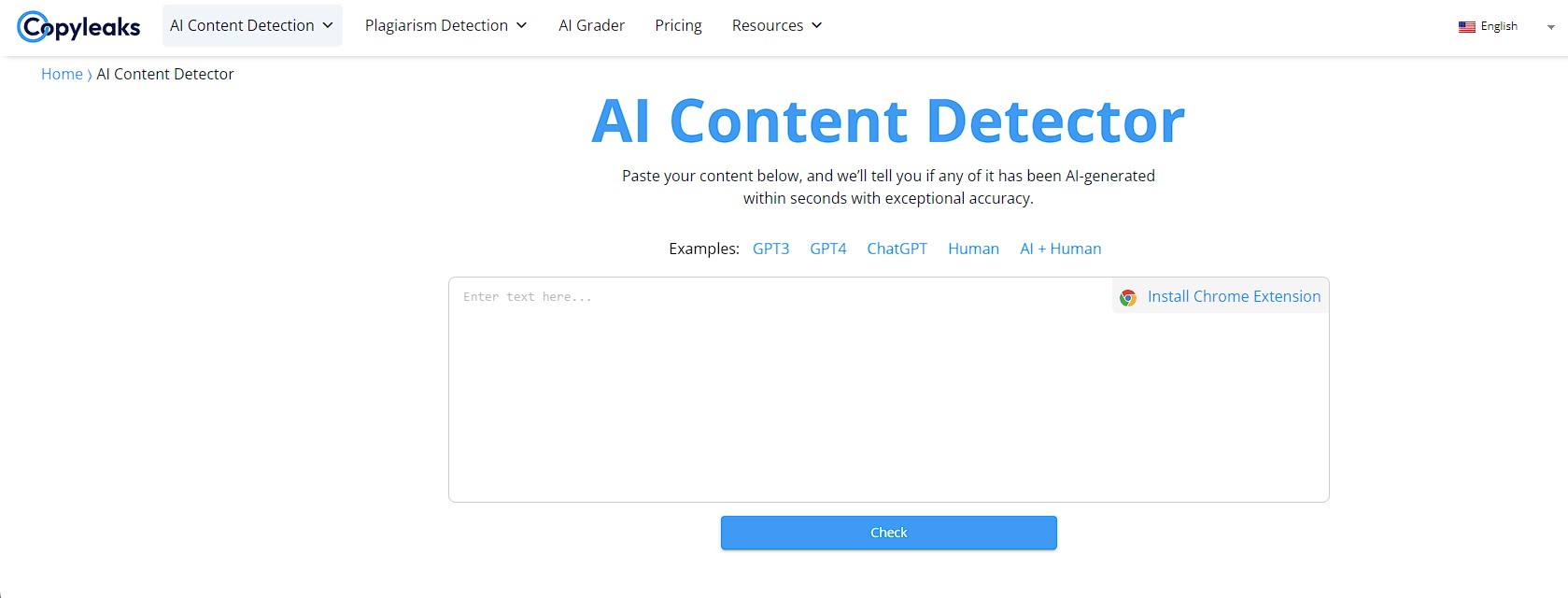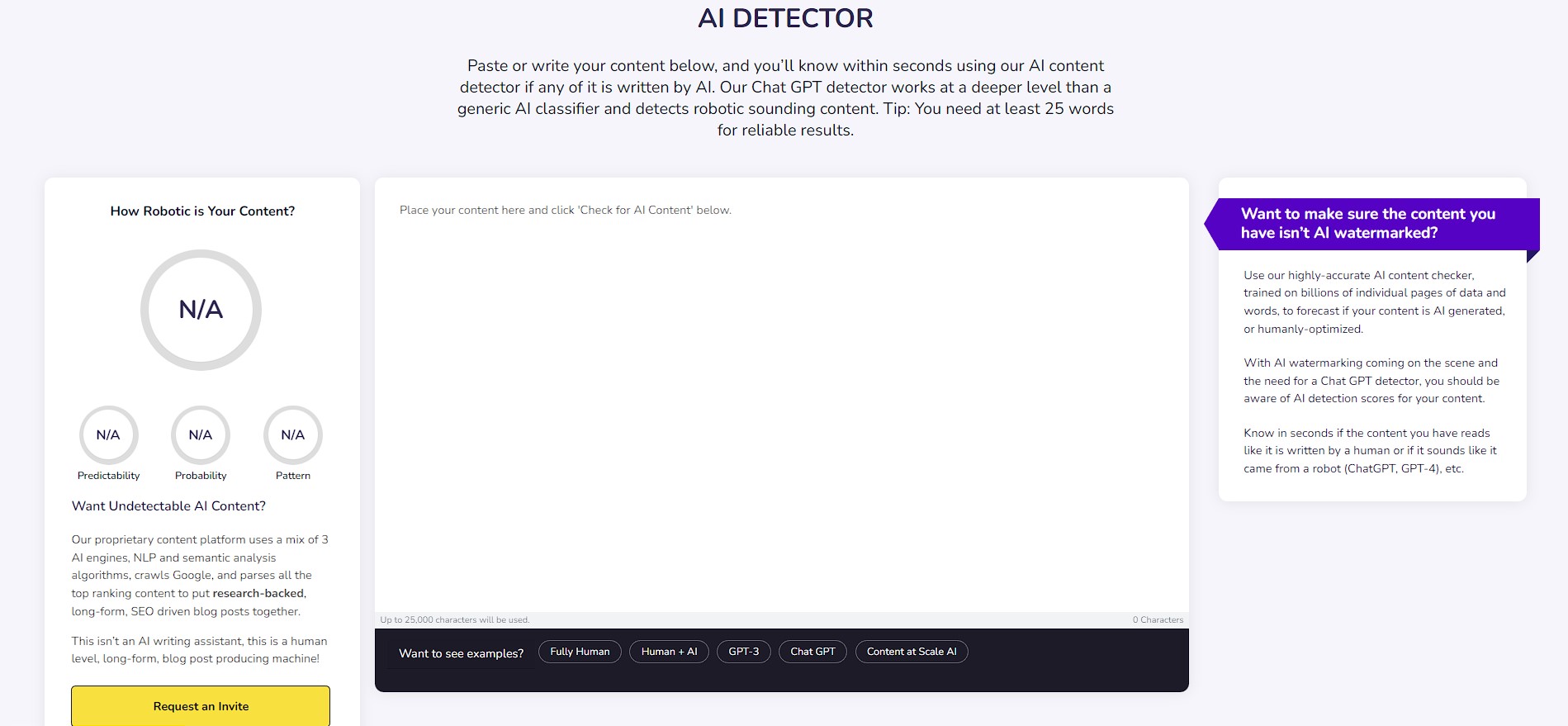Technology has forever changed on a whole new level since the launch of AI tools that can generate comprehensive text-based content like blog posts, articles, and eBooks.
Using AI tools like ChatGPT and Bard has been revolutionary as they can create human-like content within seconds. All you need to do is, prompt them, by simply chatting with them. It’s like telling another person to do a certain task on chat.
And, within seconds, you can have amazing content. It’s so well articulated in an engaging way, that it’s almost impossible to say whether the content has been written by humans or AI.
Although these AI tools can do some really good work, it’s not perfect yet. They do make mistakes, with incorrect and inaccurate information.
So, generating content without manual intervention using AI isn’t the best idea, as you can unknowingly include the wrong information in your content which can hamper your brand reputation and SEO efforts.
These tools have also been widely misused in unethical practices like unfair academic practices, which have led to global outrage. The AI revolution has also stirred up an interesting debate, “will they replace human writers?”
Well, that’s still far from over, as these tools still tend to make mistakes and mostly generate thin content. Plus they rely on prompts, and using common prompts on a mass scale can lead to the generation of numerous generic content that provides little to no value.
To prevent all of these mishaps, developers have created and improved AI text detection tools to finally identify and determine whether the text content was written by a human or an AI.
Surprisingly in many events, the AI text detection tools have made incorrect remarks, and the results were not so accurate. In a recent study, AI text detection tools have scored an average accuracy of 60%.
Now, the question is, how accurate are these AI text detection tools? Can we actually trust them? Or, do we just get a probable evaluation here?
Well, to answer all these questions, this article goes through a comprehensive discussion that covers the accuracy of AI detection tools, their pros, and cons, an evaluation of the top 4 AI detection tools and their accuracy, along with their ability to detect AI spinoffs and impact on SEO.
How accurate and effective are AI Detection Tools? Are they precise or prone to incorrect results that can be misleading?
So far there isn’t a single AI text detection that’s 100% accurate. Although GPTZero claims to have a detection accuracy of 98%, that’s still controversial as there isn’t any legitimate study from credible sources that validate the authenticity of these AI text detection tools.
Alongside GPTZero there are other AI text detection tools like CopyLeaks, Originality.AI, and Contentscale.AI, etc. All of these companies claim that their tools have a high detection rate.
We can’t simply trust the companies that made these tools right? In another recent study, 200 sample content were tested using AI detection tools. Among these 200 sample content, 78% of them were fully AI-generated, but these AI text detection tools detected 50% of AI content in those 78% fully AI-generated content.
In the same research, they tested 10% of samples which were 100% written by human authors without the help of any AI tool, yet these AI detection tools traced 50% of AI content in those samples.
The results here draw a huge question mark on the accuracy of these AI text detection tools. It’s oddly surprising that the AI text detection tools couldn’t properly identify AI content that was fully generated using AI tools, the result should have shown 100% AI content.
Given the benefit of the doubt, at least a solid score of 80-99% would be quite accurate, but 50% is far from over. The content that was written by human authors could have an average AI text detection score of 10% to 20% max. In that way, it would be easier to quantify the nearest estimate.
Well, one thing’s established here and that is, AI text detection tools aren’t nearly as accurate as they’re claimed to be. This calls for further research to evaluate how accurate are these AI text detection tools in real terms.
Pros & Cons of Using AI Text Detection Tools
Although their detection accuracy is controversial yet it is still useful to an extent, as you can at least get an estimate and further verify. On the contrary, it also depends on which AI detection tool you’re using.
Before proceeding with further research and evaluation of AI Text Detection tools, let’s look into the pros and cons so that you can effectively determine how much you can rely on these AI detection tools.
Pros of AI Text Detection Tools
- Can quickly identify whether the content’s been generated using AI
- Can detect AI spinoffs or content that has been paraphrased using AI tools
- Ideal for preventing AI content plagiarism
- Highlights sentences and texts that may have been AI generated
- Can potentially save your brand reputation and SEO efforts by tracing AI-generated content
Cons of AI Text Detection Tools
- Not 100% accurate and can generate misleading results
- Results significantly vary from one tool to another
- Risk of false positives or negatives in the detection process
- There aren’t any proper evaluation criteria to truly determine the accuracy of their results
- Some of these tools significantly lack reliability and trustworthiness
- Most of these tools are not free and come with expensive subscription fees
Top 4 AI Detection Tools and their Level of Accuracy to properly identify AI text content generated using ChatGPT, Bard, etc.
To put the AI detection tools to the test, we have taken the stance to evaluate the accuracy of these AI detection tools like GPTZero, Originality.AI, CopyLeaks, and ContentScale.AI based on primary and secondary research methodologies.
1. GPTZero
GPTZero has a unique scaling system to help users differentiate whether the content has been generated using an AI tool like ChatGPT, Bard, Jasper.ai, etc, or was it written by a human writer.
GPTZero Dashboard User Interface
GPTZero identifies AI content by analyzing the extent of randomness in texts. According to the tool, human-written content is likely to have a high perplexity score which signifies the level of randomness, along with significant variations which are labeled as burstiness score.
Any score near 100 or higher is considered to be written by a human writer, and any score closer to 0 means it’s AI-generated. So, in this case, the higher the perplexity score the more likely that it’s human-written. To put GPTZero to the test, we have analyzed 10 sample content.
According to the results, GPTZero labeled all 10 sample content as most likely written by a human, and each of them had a high perplexity score of 95 to 268, and a burstiness score of 95 to 807.
However, 1 out of 10 content had the lowest score of 75, and a burstiness score of 95, which was written entirely by one of our in-house human writers. Regardless of the score, GPTZero labeled this content as most likely human written as well.
Even though it had the lowest perplexing and burstiness score, GPTZero was still accurate in determining whether the content was AI-generated or not. Yet, the lower perplexity and burstiness scores draw some controversy about the fact whether the content was entirely written by a human.
Later we generated 5 content entirely using ChatGPT and the perplexity score ranged from 10 to 25, and the burstiness score from 10 to 20. The tool even correctly labeled the content as likely to be written by an AI.
Then, we generated 5 content that was partially AI and human content, and the tool identified the content as may include parts written by AI, with an average perplexity score of 85 to 92 and a burstiness score of 150 to 180.
Although the remarks are accurate here, the perplexity score being close to 100 does make it confusing, and it becomes difficult to judge to what extent the content is AI-Generated and written by a human writer. On the contrary, the tool does mark AI-Generated content using a yellow highlighter. Yet, there were times sentences that were written by human authors were falsely marked as AI content.
Lastly, we used paraphrasing tools like Quillbot, Spinbot, etc, and GPTZero produced a similar perplexity score as it did for the content that was totally AI-Generated, and the tool also labeled it as AI content.
According to our test results, it’s safe to conclude that GPTZero has an average accuracy of more than 90%, so yes it’s close to the original claim of 98% accuracy in distinguishing between AI-Generated and human-written content.
Yet there were times in which the tool provided false positive results which still draws a big question mark on the tool’s AI Text detection accuracy.
OpenAI has stated that its detection tools can lead to false positives which account for an average of 9% of false positive results. This means that tools such as GPTZero and AI Text Classifier can incorrectly label human-written text as AI-Generated content.
On the contrary, you can still use GPTZero and AI Text Classifier to get a quick analysis of whether the content is AI-generated or human-written.
Later, you can proofread to evaluate and distinguish whether it’s truly human-written or AI-generated and also to what extent.
2. Originality.AI
Originality.AI is a specialized AI text detection tool that claims to have an accurate detection rate of 96%. GPTZero claimed to have the highest AI text detection accuracy of 98% yet it couldn’t deliver that level of accuracy.
So, how accurate is Originality.AI given that it’s not a free tool, unlike GPTZero? Is it better or worse? Well, for starters, they charge $0.1 per credit, and each credit allows you to scan 100 words. They also offer 2000 credits for $20, whereas GPTZero allows users to use the tool for free, although it has premium plans with more robust features.
Is it worth the investment? Let’s find out! The additional benefit of using this tool is, it also scans for plagiarism in the content, so you get to see what percentage has been written by a human and also identify any plagiarised content directly copied from other websites.
Originality.AI User Interface Dashboard
According to a case study by Authority Hackers, the content was generated using Jasper.ai and ChatGPT. The content has been directly written using straightforward prompts like “write a short article about 5 affiliate marketing mistakes”.
The result showed 97% AI-Generated content, later the same content has been generated using ChatGPT 3 and edited by one of their in-house writers. This time, the result showed 82% AI content, which was more or less expected here.
Well, to make it a bit more challenging, they have prompted ChatGPT to generate the same content using the writing style of their in-house writer and also by replicating the writing style of Brian Dean.
Surprisingly, the results of the next two content were 2% AI-Generated content and 9% AI-Generated content. That’s a major detection flaw there, as Originality.AI has provided false negative results here.
In another case study, which we have mentioned earlier, Originality.AI made major detection errors, typically identifying 50% false positive results for content that has been entirely written by human writers.
These case studies imply that Originality.AI’s test results are not totally accurate, and it can generate false positive or negative results which can lead to big-time contradictions.
Based on these online evaluations, it is recommended that tools like Originality.AI are used with extreme caution. Although it’s capable of detecting AI-generated text content, it can also produce inaccurate results.
However, it is effective in identifying content that has been generated using generic, or straightforward prompts. In a nutshell, you should get the content double-checked by other tools, and lastly by a professional proofreader to determine whether it’s truly human or AI written.
3. CopyLeaks
CopyLeaks is a similar AI Text Detection tool, like Originality.AI it also has a plagiarism checker, which makes it the perfect tool to identify the authenticity of the content.
Copyleaks User Interface Dashboard
When the matter of perfection comes to concern, it is imperative to verify how accurate is the AI Text Detection system of CopyLeaks. They claim to have an almost perfect score of 99.12% in AI Text Detection accuracy, which exceeds the claim of GPTZero.
So, is CopyLeaks truly 99% accurate, or is it simply a marketing tactic to build a sense of credibility? Well, the only way to find out is to put this tool to the test here.
We have conducted a similar test here as we did for GPTZero by analyzing 10 sample content written entirely by our in-house writers without the use of any AI tools.
Surprisingly, the results were rather odd here, and we’ve found tons of false positive results, which significantly contradicted the results of GPTZero. Not saying that GPTZero’s perfect, but their AI text detection accuracy has so far been the most accurate.
Although the tool correctly labeled 9 out of 10 content as human text, the results showed only 3 content had a high human text score of 75% to 85% and more, among them 6 content had an average human text score of 50% to 60%.
Even if we choose to give it the benefit of the doubt here, how does a 50% human text score justify it as human-written content and not AI-Generated?
Among 1 out of 10 content was marked as ‘AI Content, with a score of 30% of human content. So, does that mean any result below 50% is actually AI-Generated content, or could be a possible mixture here? That makes the results even more contradictory and controversial.
The tool allows you to hover through the text box, by marking the AI-Generated content using a red highlighter. Surprisingly, all these highlights were false positives.
Although the tool was absolutely accurate when we analyzed fully AI-generated content using ChatGPT, Jasper, and online paraphrasing tools like Quillbot.
Regardless, it still does not justify the false positive results that we’ve found using this tool. Ultimately, the reason you’re checking is to validate whether the particular content is AI-Generated or not.
So, if you get misleading results and false positives, it does not make the tool reliable enough to determine whether the content is original or not. Overall, CopyLeaks is not effective enough to detect AI-Generated content in real terms.
We have done some research on it as well to find out whether our test results contradict the others on the web, it turns out that the tool does have some major detection flaws, especially leading to false positives. Here’s another detailed review of CopyLeak’s AI Content detection accuracy.
4. ContentScale.AI
We have scrolled through their website and checked the entire page of their AI text detection tool, surprisingly they didn’t proclaim any detection accuracy, unlike its key competitors.
ContentScale.AI User Interface Dashboard
So, before proceeding with our tests, we decided to do some further research on this tool. We’ve found that it managed to score 90% AI text detection accuracy in another comprehensive review.
However, we felt the need to validate the legitimacy of their review, so we ran our tests once again to find out how accurate is its AI text detection accuracy in real terms.
So, we took the stance to run a similar analysis as we did for the other AI detection tools.
Surprisingly, all of our original content got a high human score of more than 93%, of which 6 of our content scored 96% to 99% for containing original human-written content.
Their results seem to be very precise and it’s quite similar to the remarks that GPTZero made. It labeled all of our content as likely to be human-written.
When we analyzed 5 content generated by ChatGPT, it had a poor human originality score of 20% to 30% and remarked that the content is highly likely to be AI-Generated.
So, when we mixed the content with human and AI-Generated content, the human originality score came to about 50% to 60% and the tool couldn’t determine whether it was written by a human or AI-Generated content.
It produced similar results for AI-Generated spin-offs using paraphrasing tools. Although it did an outstanding job in identifying the content that was totally crafted by our in-house human writer, it failed to identify content that was partially generated using AI and the ones which were merely paraphrased using tools like Quillbot, Spinbot, etc.
In conclusion, that points out major AI text detection flaws, and hence the tool isn’t as accurate as it seemed to be in the beginning. Given the fact that this tool highly lacks accuracy, and is unable to trace AI paraphrasing hence it’s not so reliable for tracking AI text content.
Can the AI Text Detection Tools detect content that is paraphrased using tools like Quillbot, Spinbot, WordAI, etc?
In our comprehensive analysis, we have also tested multiple online paraphrasing tools like Quillbot, Spinbot, and WordAI, and according to the results of most of these AI Text Detection tools were able to trace the AI watermarks and correctly identify the paraphrased content generated using these online paraphrasing tools.
Apart from Contentscale.ai, the 3 other tools did pretty much flawlessly in identifying AI content. But without a doubt, GPTZero has proven to have the highest level of accuracy even in tracking AI paraphrased content.
So, yes most AI text detection tools can detect content that is paraphrased using these online tools.
Not to mention, it is best to avoid using these paraphrasing tools, as they tend to deviate from the original value of the content by changing the meaning of the entire content.
Therefore using paraphrased content can massively hamper your online visibility, conversions, and brand reputation.
Can AI-Generated Content Hinder SEO Efforts?
The thing about AI tools is, whether it’s ChatGPT, Bard, or Jasper.ai, these tools extract information from particular databases.
Although they are language models perfectly capable of generating original content, some of the information may be taken from the content that’s already existing on the web.
And, if you use these AI tools to partially or completely generate content, then there’s a high chance that your content may be plagiarized to an extent. Ultimately that will lead to search engine penalties which may include your website being deranked, deindexed, removed, and even banned from the search engine database.
Plus, Google can also detect AI watermarks in text content, it’s okay as long as the content is original and adds value but there’s still a high probability that someone else may be using similar prompts.
The risk of producing the same content is higher if generic prompts are used to produce content. So, to avoid the risks of search engine penalties it is ideal not to rely on AI to generate content.
On the contrary, you can take help from the AI by generating ideas, points, or even sentences but it’s best if you use the AI content as a sample to create your very own content.
If you effectively use these AI tools, you can speed up work processes, but it’s best to refrain from using AI to generate web content like blogs, articles, case studies, website copies, product descriptions, eBooks, etc.
But in a nutshell, the risks of using AI-Generated content are much higher than the benefits, so it’s highly recommended to use original human-written content, especially if you don’t want to risk your SEO efforts being compromised.
Final Remarks
Well, based on our test results, and comprehensive online research it is safe to conclude that none of these AI Detection Tools are not completely accurate, and they can confuse users and leave them puzzled.
However, by using these detection tools, you can get a gross idea based on which you can further proofread the content to verify how it was produced.
Among all these tools GPTZero has been the most accurate. Although it has its own share of flaws, it’s better to use an AI Text Detection tool that’s most accurate.
Disclaimer: This article has been produced to help people understand the pros and cons of using AI-Detection Tools. We have no affiliation with any of the companies mentioned in this article. It’s truly an awareness content to help people realize the benefits and drawbacks of these tools. Additionally, the detection accuracy of these tools can vary depending on many factors, and the tools may also improve their accuracy by launching updates.
We understand that it can be very difficult and time-consuming to produce high-quality value-packed content. So, if you need help producing content to either improve your brand awareness, boost your online presence, or grow your sales revenue then you can consider checking out our Content Marketing Services.
If you are interested to consult with our Content Marketing Representatives, then Book a Free Content Marketing Consultation right away, and one of our consultations will get in touch with you shortly.
Oh and for the record, we have a diverse team of content writers who specialize in creating high-quality original content across various industries. So, you can rely on us to help you rapidly scale up your online presence and streamline increased sales revenue.









